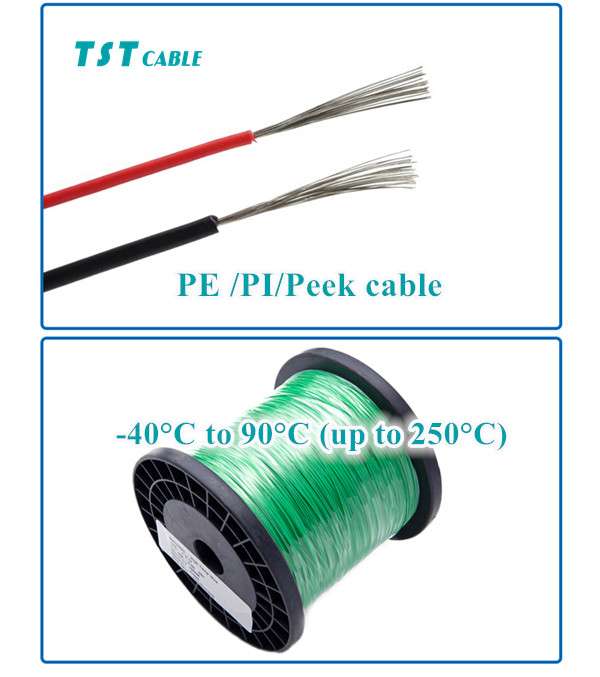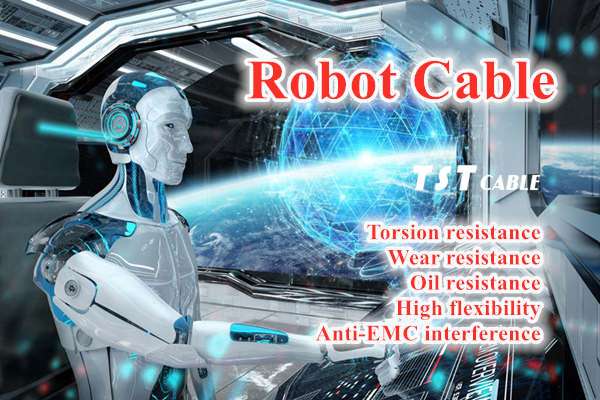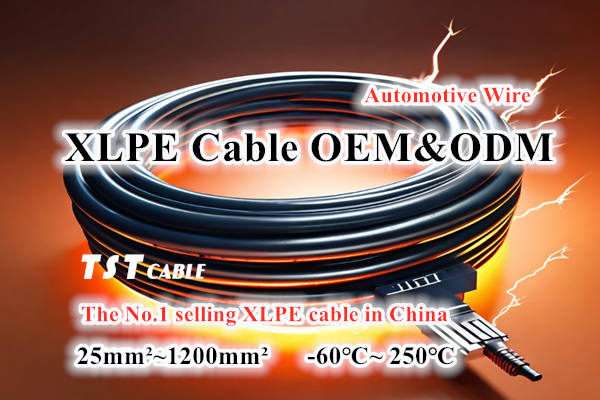Micro cables refer to cables with very small diameters, which are usually used in applications with limited space or strict weight requirements. They are designed to meet the basic needs of signal transmission and power supply while adapting to compact design constraints. With the development of science and technology, especially in the fields of medical equipment, consumer electronics, robotics and aerospace, the demand for TST CABLES micro cables is growing.

Features and advantages of micro cables
Miniaturization: The biggest feature of micro cables is their small size, which can provide necessary connections in a small space.
Lightweight: Compared with traditional cables, micro cables are lighter, which helps to reduce the weight of the overall equipment, especially suitable for portable devices and aerospace applications.
High flexibility: In order to adapt to complex and changing wiring environments, micro cables are usually highly flexible and easy to install and maintain.
High performance: Despite their small size, micro cables are able to support high-speed data transmission and stable power supply to ensure the efficiency of equipment operation.
Micro cable application areas
Medical equipment: In minimally invasive surgical instruments, endoscopes and other precision medical devices, micro cables provide the necessary signal and power transmission functions without affecting the accuracy of operation.
Consumer electronics: Smartphones, tablets and other portable electronic devices rely on micro cables to connect internal components, such as camera modules, displays and motherboards.
Robotics: In industrial and service robots, micro cables are used for data transmission and power supply in joints, which ensures the flexibility of robots without affecting their performance.
Aerospace: Due to strict restrictions on weight and space, micro cables are widely used in satellites, drones and aircraft to reduce weight and optimize space utilization.
Micro cable development trends
Material innovation: With the advancement of nanotechnology and new materials science, future micro cables may use more advanced conductors and insulation materials to further reduce size and improve performance.
Integrated versatility: The future design trend is to integrate more functions into one cable, such as combining optical fiber with traditional copper core to achieve simultaneous transmission of data and power and improve efficiency.
Environmental protection and sustainability: Manufacturers are exploring how to reduce environmental pollution during the production process and developing recyclable or biodegradable materials to respond to the global call for green manufacturing.
As an important component of modern high-tech products, micro cables play a vital role in promoting technological innovation and development. As the demand for miniaturized and high-efficiency solutions in various industries continues to increase, the technology and application of micro cables will continue to evolve.
Micro cable technology progress and innovation

Enhanced durability and reliability: With the advancement of material science, future micro cables will be more durable. For example, the use of nano-coatings or special composite materials can improve the resistance of cables to the external environment (such as humidity, temperature changes, chemicals) and extend their service life.
Smaller size and higher density data transmission capacity: In order to meet the growing demand for high-density connections, the design of micro cables will continue to develop towards smaller diameters but higher data transmission rates. This includes improving existing copper cable technology and promoting the application of fiber-optic micro cables.
Customized and modular design of micro cables
Customized solutions: It is becoming more and more common for TST CABLES to provide tailor-made micro cable solutions for specific industries or applications. For example, in the medical field, cables are designed according to the specific requirements of surgical instruments to ensure optimal operational flexibility and performance.
Modular components: The development of modular cable systems allows users to flexibly combine different functional units according to actual needs, which not only facilitates installation and maintenance, but also improves the adaptability of the system.
Intelligence and connectivity
Integrated sensor technology: Future micro cables may integrate various types of sensors to monitor the status of cables in real time (such as temperature, pressure, wear, etc.), and feed this information back to the central control system through the Internet of Things (IoT) technology so that preventive measures can be taken in time.
Support for 5G and future communication standards: With the popularization of 5G networks and the development of subsequent communication technologies, micro cables need to have sufficient bandwidth and speed to support high-speed data transmission while maintaining low latency and high reliability.
Expansion of micro cable application cases
Wearable devices: Micro cables are increasingly used in wearable devices such as smart watches and health trackers. They not only need to be small and light, but also must be able to withstand frequent bending and stretching without affecting performance.
Autonomous vehicles: In autonomous vehicles, micro cables are used to connect various sensors (such as cameras, radars), controllers and actuators to ensure efficient communication between various parts of the vehicle, which is essential for achieving safe and reliable autonomous driving.
Environmentally friendly design of micro cables
Sustainable development: Considering the requirements of environmental protection, manufacturers are working to reduce energy consumption and waste generation in the production process and explore the possibility of using renewable resources to manufacture cables.
Recycling: Develop cable designs that are easy to disassemble and recycle, encourage the effective recycling of waste cables, and reduce pressure on natural resources.
As a core component of modern high-tech products, the development trend of micro cables reflects the progress of science and technology and changes in social needs. Through continuous innovation and technological upgrading, micro cables will demonstrate their unique value in more fields and bring new opportunities and development space to all walks of life. With the growth of market demand and the continuous maturity of technology, the application scope of micro cables will continue to expand.
Safety and protection characteristics of micro cables
Fire resistance: With the improvement of safety standards, future micro cables will pay more attention to fire protection design. The use of new flame retardant materials or the addition of fireproof layers can significantly improve the safety of cables and reduce fire risks.
Anti-electromagnetic interference (EMI) capability: In high-density electronic devices, micro cables need to have good anti-electromagnetic interference capabilities to ensure the stability and accuracy of signal transmission. By optimizing the cable structure and using shielding materials, the impact of external electromagnetic fields on cables can be effectively reduced.
Cross-industry integration of micro cables
Combination of medical and robotics technology: In the field of minimally invasive surgery and remote diagnosis and treatment, micro cables are not only used to connect various medical devices, but can also be integrated into surgical robots to achieve more sophisticated operation control. This cross-industry integration provides technical support for precision medicine.
Consumer electronics and the Internet of Things (IoT): With the popularization of concepts such as smart homes and smart cities, micro cables will play an important role in connecting various IoT devices. They can provide stable power supply and high-speed data transmission, supporting seamless communication between devices.
Innovative application scenarios of virtual reality and quantum communication technology of micro cables
Virtual reality (VR) and augmented reality (AR): In VR/AR devices, micro cables are used to connect head-mounted displays and computing units to ensure high-quality image rendering while maintaining a lightweight and comfortable design. In addition, with the development of wireless technology, how to achieve efficient data transmission in a limited space has become a research hotspot.
Quantum computing and communication: Although it is still in the early stages, micro cables may be used in the future to connect components inside quantum computers or in quantum communication networks, as they require extremely high precision and stability.
Economic benefits and market prospects of micro cables
Reduce costs: By improving production processes and adopting new materials, manufacturers can effectively reduce the production costs of micro cables, making such products more competitive in the market.
Expand market share: As the demand for miniaturized solutions in various industries grows, the market demand for micro cables will continue to expand. In particular, in fast-growing markets such as electric vehicles, drones, and personal electronics, the application prospects of micro cables are particularly broad.
TST CABLES micro cables have shown great application potential in many high-tech fields due to their small size, light weight and high performance. In the future, with the advancement of materials science, manufacturing processes and information technology, micro cables will continue to develop in the direction of smaller size and higher performance, and play a role in more innovative application scenarios. At the same time, in the face of increasingly stringent environmental protection requirements and social responsibilities, the development of green and sustainable micro cables will also be one of the important directions for the development of the industry. Through continuous technological innovation and market expansion, micro cables are expected to open up more possibilities.
Also available in:
English





